Explosion of conversion with value proposition: creation and testing

Value proposition determines whether users will study your product or quickly close the site.
This is the first thing a user should see at all entry points, landing pages. Not for aesthetics or SEO, but to increase your CLV (profit from one client for the entire time of cooperation).
In this article we will analyze the report of the famous marketer Pip Laya “How to create an effective value proposition”. Let's look at cool and unsuccessful examples, and also give a breakthrough testing technique for value proposition to increase conversion.
What is value proposition?
This is why a potential customer should buy from you. Brief "program" of the business:
- How does your product solve customer problems?
- What are its advantages?
- How do you differ from your competitors?
The answers should be clear to every user from the target audience. Fast and concrete.
What is NOT a value proposition?
"An income-centric marketing automation system, a solution to improve sales performance."
Imagine that you are explaining this to your friend: will he understand what benefit he will receive from this system? It is doubtful. And such expressions on every second site.
Value proposition works in client language. As if you are joining the thoughts in his head. Guessing is useless, you need to know the wording of the target audience exactly. To help - polls, dialogue on social networks.
Secondly, it is not a slogan or a catch phrase, for example:
“L'Oréal - you deserve it”
and not positioning:
“Antipyretic agent No. 1 - soothes pain, heals faster”
Positioning is part, but not the same, as value proposition.
What does value proposition include?
This is a block from the headline, subheading, bulletins or paragraph of the text with visualization (photo of the product or developer, infographic).
1) The title. It attracts attention, shows the benefits in one short sentence.
2) Subheading and text paragraph - explain in more detail what and for whom you offer.
3) Bulletins or bulleted list of 3 items: the key properties and advantages of the product.
4) Visual - enhances the text "message".
You can evaluate the value proposition on the following issues:
- What product or service does your company sell?
- What is the ultimate benefit of using it?
- What makes your offer unique?
How to create a compelling value proposition?
What is it, for whom and why is it useful? If you have a clear and understandable answer to all 3 questions, you are on the right track. Clarity first.
If your value proposition makes the audience think: “What is it about, why do I need it?”, Then it needs to be corrected. When users need to read a bunch of information, most will simply not rack their brains and leave.
Yes, a sufficient amount of information is needed to make a decision, and without a convincing proposal at the very beginning, it will be wasted.
StudyMarketingExperiments says 67% of companies have problems with a clear expression of value proposition.
Characteristics of an effective value proposition
- Clarity
- The specific results that a client will receive from using the product
- Competitive advantages
- Lack of groundless statements, especially in the superlative degree ("Best", "Affordable price", "Lowest price")
- Time to read and understanding - 5 seconds.
Usually there is a difference between the value proposition of the company and the product. Ideally, you need to combine them.
A key role is played by differences from competitors. Most people look at 4-5 product options or suppliers before making a decision. USP should report real benefits.
There is no point in creativity (“The ball bearings in our bikes are blue”). Uniqueness does not work in the whole world, but only in the minds of consumers.
"Engines" value proposition
- Free delivery
- Fast delivery, the day after the order
- Free bonus upon purchase
- Free installation
- Money back guarantee
- Reduced price.
Think about what you can add to the product - not burdensome for your business and attractive to the buyer.
An example of an online furniture store Down & Feather:
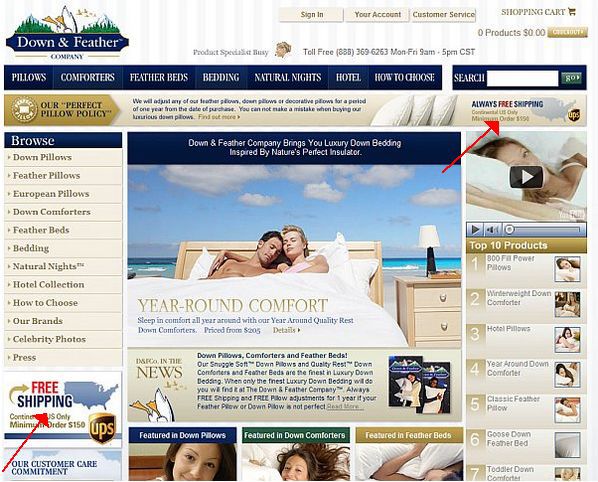
Pay attention to the signs "Free Shipping". This is a unique "chip" that catches your eye.
Cool examples of value proposition
1) CampaignMonitor
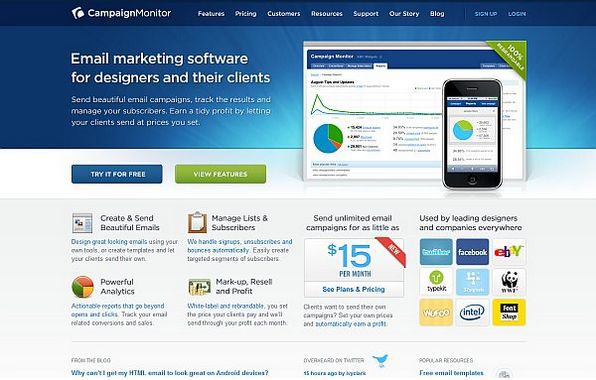
What is good:
- A clear message in the header, what it is and for whom: "Email-service for designers and their clients";
- A text paragraph under the headline with Benefits: “Send beautiful newsletters, track results and manage your subscriber base. Get profit from customers at prices that you set yourself;
- Key benefits on the first screen, with icons: “Create and send beautiful emails; manage lists and subscribers; powerful analytics; profit on reselling ";
- Relevant image;
- Attractive price offer ("Belimit tariff for $ 15 per month");
- Social proof - logos of leading customers;
- Amplifier - "100% resale rights."
2) Geekdom

What's good:
- A clear message for whom and for what: “A new type of joint workspace for entrepreneurs, developers and creators. Helps to mutually build and develop business and other cool things ”;
- Relevant image;
- List of benefits, 14 bullets.
3) Evernote
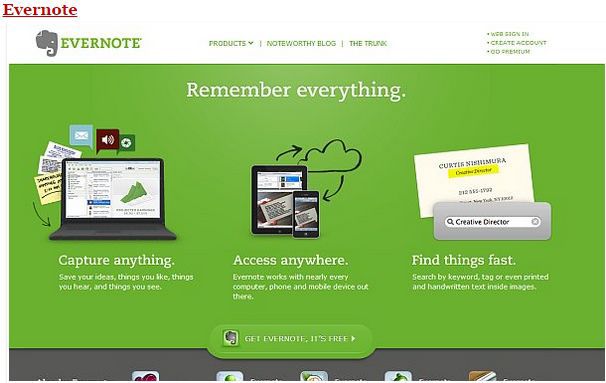
What’s good:
- An excellent slogan: “He remembers everything.” In this case, you can add a subtitle that will enhance it.
- Key benefits with thematic icons and convenient location: easy and quick to read.
- Call to action - “Get Evernote, it's free.”
An interesting example of the Russian analogue "Megaplan":

Unusual, lively language. The only negative is the specific functionality of the service in another place, on the page "Services":
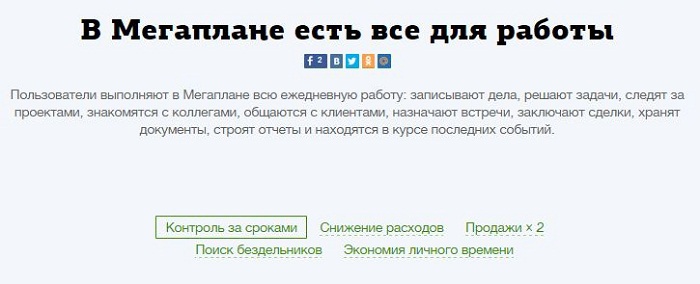
Unsuccessful examples of value proposition
1) Cloudflare A

cool service, and the value proposition needs to be adjusted.
What's bad:
- Relying on the video is too risky. Not all users will watch it right now, and if there is no further explanation for whom and why the service is needed, this gives a high bounce rate. A significant part of users simply will not "bother", and will leave the page.
- An incomprehensible signature: "Give us 5 minutes, and we will speed up your site." What does “speed up” mean? The service really improves the performance of web resources, but this is not clear.
2) Continuum Financial (financial and insurance services)
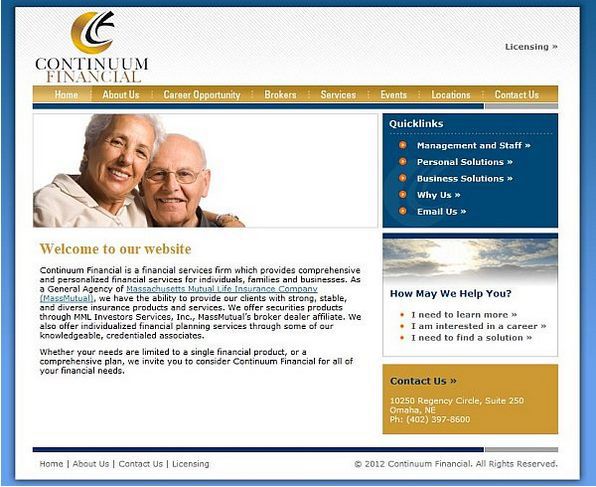
What's bad:
- There is no value proposition at all. The text block contains a story about the history of the company and the listing of services in too general phrases: “A leading financial company provides comprehensive individual services for people, families, businesses.” It painfully resembles the Russian stamp "A dynamically developing company offers a wide range of services."
- Text in small print. On the main page there should be at least 14 size
- Useless heading "Welcome to our site." Have you ever seen a business where you are not happy with customers? Instead, there should be an offer, a unique selling proposition.
- Clerical language, with many strange expressions.
- Relevant but stock photo. And it just “kills”)
How to test value proposition?
1) Testing ads, banners
In this case, ads with different value proposition are tested. The higher the CTR, the more effective the option. Which, of course, does not mean conversion to sales.
An example of the American company WeightWatchers:

and the Optimizely service:

2) A / B testing of landing pages
Compare two options (or more with a “ton” of traffic). Ideally, you should measure the conversion to sales, at least the conversion to applications. Quite a laborious process: for each version of the tested element - a separate page.
For example, you want to compare 4 headings - create 4 pages,
wait at least 3 weeks before statistical certainty. Tests are performed sequentially:
A vs B = winner B
C vs D = winner C
B vs C = winner C In
total, it takes 6 weeks before you determine the highest conversion option. Multitests with several versions at the same time work only on highly loaded projects.
And if, in addition to the headings, it is necessary to test images, subtitles, bulletins? Imagine how many pages it takes and how long it takes to find the ideal value proposition.
Comment by Yagla.ru CEO Alexander Alimov
A / B testing, for all its value, remains a problem spot in the conversion optimization process. Successive monotests are conducted to determine exactly which element affected the conversion.
For example, you are comparing two header options. Given that there are 4 elements in value proposition. At Yagla ServiceWe have set up multivariate testing of substitutions for requests from contextual advertising. Including, with low traffic.
Here we simultaneously test the title, signature and call-to-action in the application form:

In the editor you see the status of each substitution: with which conversion it worked, better or worse than the original.
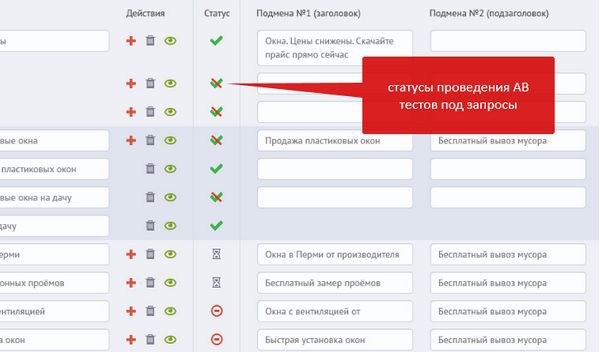
An important point: testing takes place on the same page, with automatic output of the results. This saves the marketer a lot of manual work - creating dozens of pages with different elements, and saves time on analytics.
